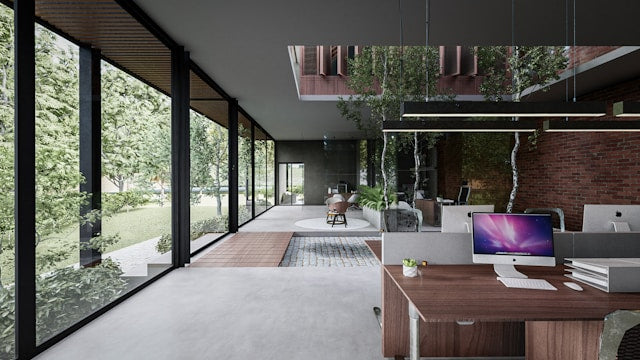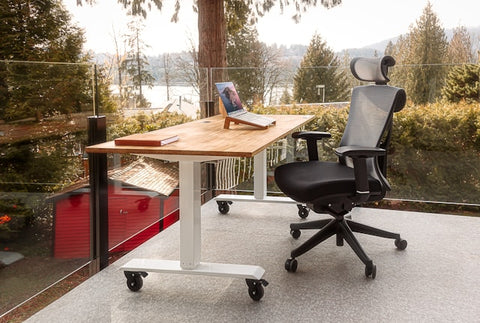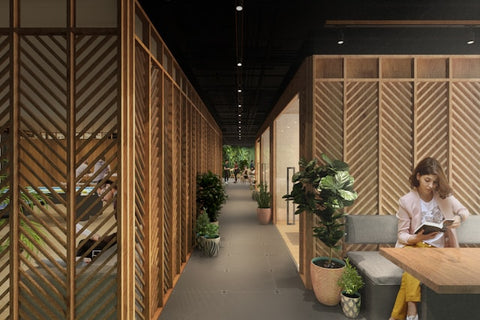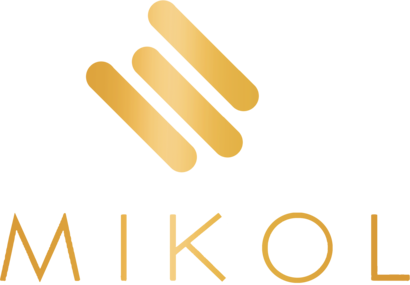
31 Evolving Home Office Aesthetics Incorporating Natural Elements into Your Workspace
Evolving Home Office Aesthetics: Incorporating Natural Elements into Your Workspace
As the concept of home offices continues to be a critical part of our professional lives, the design and setup of these spaces are shifting. More individuals seek to create environments that are functional and promote well-being and inspiration through natural elements. This move towards integrating organic materials like wood, stone, and plants is driven by their aesthetic warmth and the calm they introduce into workspaces. Such environments can lead to enhanced focus and productivity, making the incorporation of natural elements a smart choice for anyone looking to redesign their home office.
Balancing Functionality and Aesthetics: How to Choose Natural Elements That Enhance Productivity

Choosing the right natural elements for a home office requires a balance between functionality and visual appeal. Start with furniture: a solid wood desk looks appealing, is durable, and provides a timeless feel. For seating, consider ergonomic chairs with natural fabric upholstery to combine comfort with a touch of nature.
Incorporate plants strategically; they are not only decorative but also improve air quality and reduce stress. Consider also the type of wood and finishes used. Lighter woods like birch or maple can help make a space feel larger and more open, while darker woods like walnut can create a sense of grounding and focus. When selecting these elements, think about how each piece contributes to both your productivity and the overall aesthetic of your workspace.
Sustainable Choices for Modern Workspaces: Identifying Eco-Friendly Materials
The push towards sustainability is reshaping how we select materials for our workspaces. Eco-friendly materials are good for the planet and can create a healthier work environment. Bamboo, for instance, is a highly sustainable option that grows quickly and requires minimal resources. It can be used for everything from flooring to desk construction. Recycled metals and reclaimed wood are also excellent choices that help reduce environmental impact while adding character and uniqueness to your office.
Additionally, consider the sustainability of the manufacturing processes used to produce your office furniture and decor. Opting for locally sourced materials can also reduce carbon footprint and support local economies. By choosing sustainable options, you contribute to a greener planet while creating a workspace that speaks to contemporary environmental concerns.
Integrating Technology Seamlessly: Tips for Merging Modern Devices with Natural Designs

Incorporating modern technology into a home office designed with natural elements doesn’t have to compromise the organic aesthetic. Begin by choosing technology that complements the natural decor. Opt for devices with neutral colours or wooden cases to maintain a cohesive look. For example, wooden stands for tablets or laptops can blend tech into a naturalistic theme seamlessly. Cable management is key to maintaining a clean look, so use cable organisers made from natural materials like bamboo to keep wires tidy and out of sight.
Furthermore, digital tools like PDF to Word converters are essential for maintaining an efficient, paperless office. They allow you to manage documents digitally, reducing the need for physical files and helping to keep your workspace uncluttered. This supports a minimalist design where the focus remains on the natural beauty of your office. Software tools that facilitate ease of document handling not only save time but also integrate smoothly into a modern, high-functioning home office environment.
Lighting and Layout: Optimising Your Space with Natural Light and Stone Accents
Effective use of lighting and thoughtful layout are crucial in maximising the natural elements within a home office. Position your desk to take advantage of natural light sources, such as near a window. This not only reduces reliance on artificial lighting during the day but also brings the outside in, enhancing the connection to nature. When additional lighting is needed, choose lamps with organic materials like stone bases or wooden frames that complement other natural accents in the room.
Incorporating stone accents can add a cool, calming element to your workspace. Consider a stone slab for a desk surface or decorative stone items as bookends or paperweights. The thermal properties of stone can help regulate room temperature, adding to the comfort of your workspace. Layout-wise, ensure there is a flow to the placement of your furniture that allows easy movement and doesn’t obstruct light sources. This strategic placement not only optimises the functionality of the space but also highlights the natural beauty of the materials used, creating a serene and productive workspace.
Health Benefits of Natural Elements: Psychological and Physical Advantages of an Organic Workspace
Integrating natural elements into your home office design isn't just about aesthetics; it also brings substantial health benefits. Studies have shown that environments with organic materials can lower stress levels, enhance creativity, and boost overall well-being. Plants, in particular, play a crucial role in improving air quality. They naturally filter toxins and produce oxygen, which can lead to improved concentration and reduced fatigue. The presence of wood and stone can also have a calming effect, reducing heart rate and stress levels, according to research.
Moreover, the physical benefits of a well-designed natural workspace are significant. Ergonomic furniture made from natural materials can improve posture and reduce the risk of back pain and repetitive strain injuries.
The Future of Home Office Design: Trends and Predictions for Naturalistic Interiors
As we look to the future of home office design, the trend towards naturalistic interiors is set to grow. The increasing awareness of environmental issues and the ongoing shift towards remote work are encouraging more people to rethink their workspaces. Future designs are likely to emphasise sustainability even more, with a focus on renewable resources and innovations in eco-friendly materials. Technologies that facilitate remote working, such as advanced conferencing tools and seamless digital management systems, will be integrated in ways that complement the organic feel of office interiors.
Additionally, there is a growing interest in biophilic design, which involves creating a close connection between nature and built environments. This approach not only includes the use of natural materials but also incorporates elements like water features, natural light, and vegetation into home office designs, enhancing both aesthetics and functionality. As this trend evolves, expect to see a clever integration of technology that supports productivity without detracting from the natural appeal of the workspace. This future-forward approach promises to redefine the boundaries between the natural world and our work environments, creating spaces that are not only functional but also promote health and well-being.
Leave a comment
Comments will be approved before showing up.



